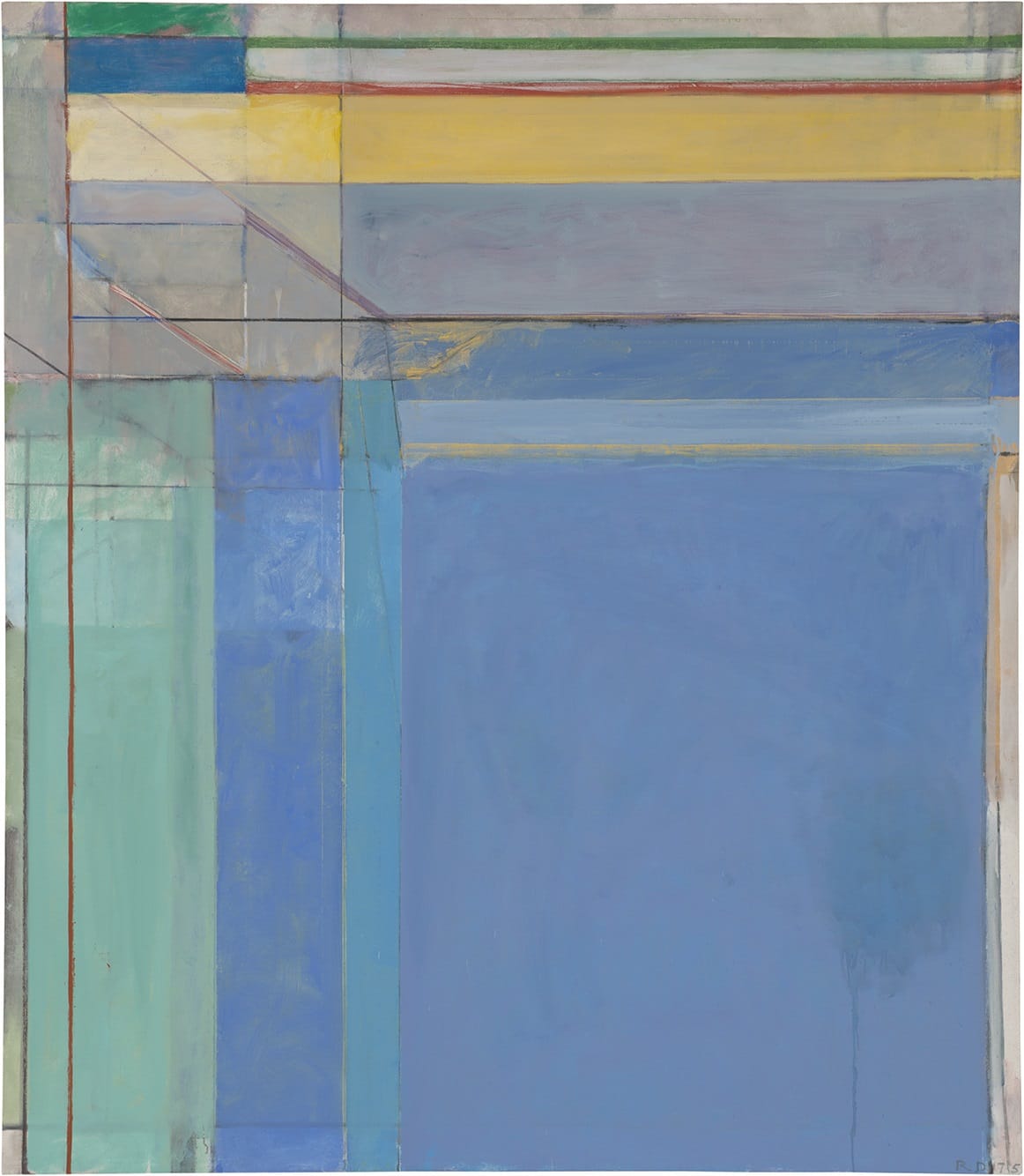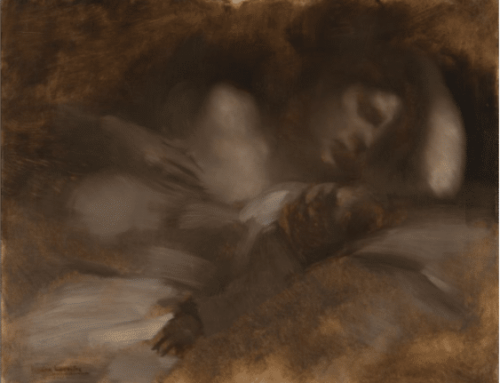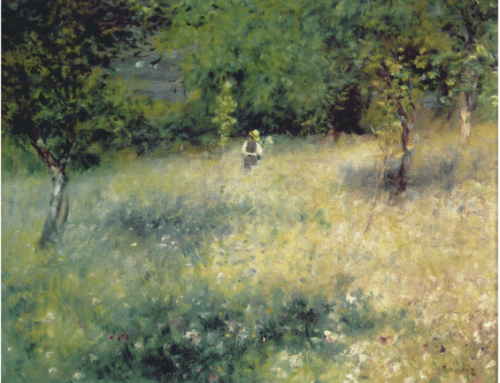Many think of Richard Diebenkorn as a non-representational, purely abstract artist. His paintings, however, are far from meaningless colors and geometric lines.
Diebenkorn painted dozens of still lifes, figures, and interiors, and his most famous paintings, the Ocean Park series, are direct responses to the atmospheres and colors of the oceans, sand, streets, and parking lots near his California studio. To my eye they resemble nothing so much as aerial views of his surroundings rendered in a poetic visual form. Casual admirers of his work usually miss that he arrived at them through a long and deep study of Henri Matisse.
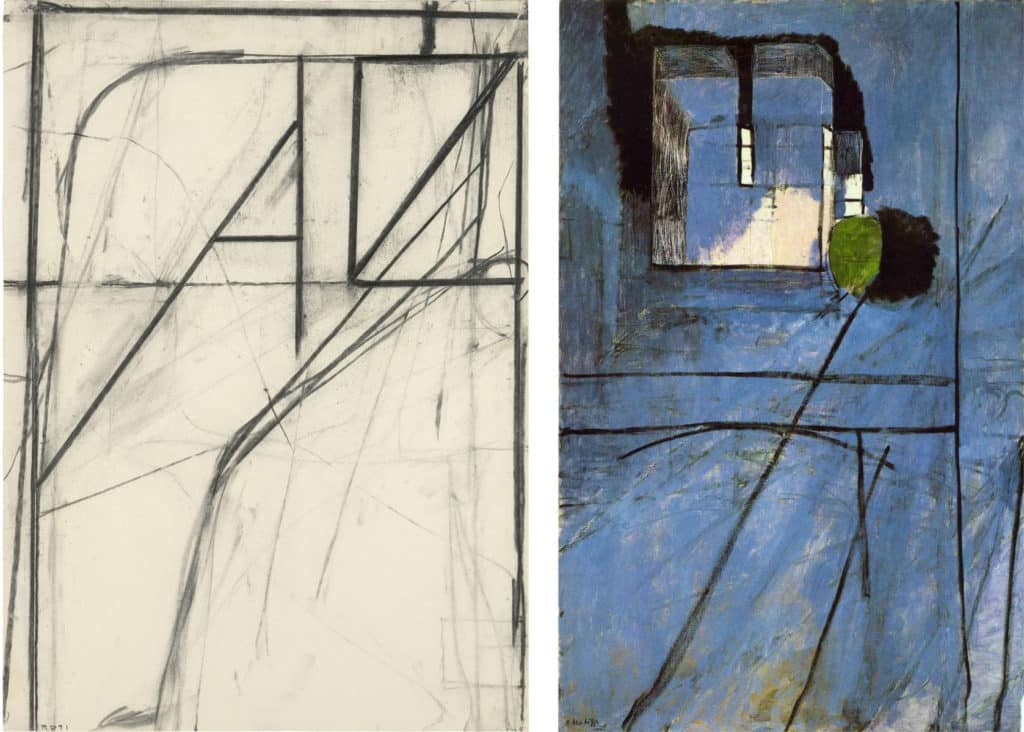
Here’s a work by Diebenkorn (left) next to View of Notre Dame, a 1914 painting by Matisse (right), a poster of which Diebenkorn had taken to his studio wall. Matisse abstracted that view of Notre Dame Cathedral which he saw from of his studio window, just as Diebenkorn looked out over the roads and lots of Ocean Park.
In an article on the Getty Museum blog titled What Diebenkorn and Matisse Taught Me about the Hard Work of Making Art, a onetime student of Diebenkorn’s recalls the artist’s love of Matisse and his single-minded focus on the importance of art, innovation, and continuity with tradition. Elyn Zimmerman writes:
“Diebenkorn’s work was in deep, serious dialogue with that of Matisse. It would be hard to find an artist today whose work is predicated on or responding to work done half a century ago. For better or worse, the art world now reflects new media, multi-faceted cultural influences, and the speed of digital time and instantaneous communication.”
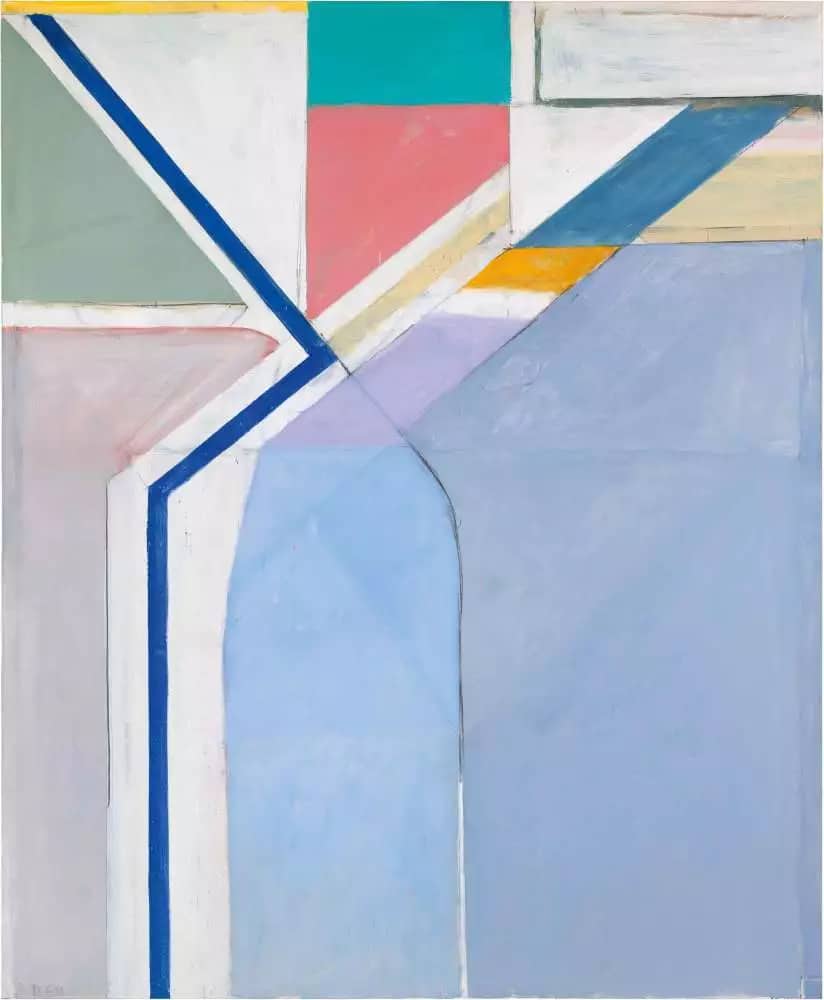
Diebenkorn’s studio sat on a hillside; he looked out and up at the geometry of the hill, and how the streets crossed one another. Above, his 1969 oil painting Ocean Park #24. The Estate of Richard Diebenkorn/Courtesy Yale University Art Gallery
At some point Diebenkorn wrote a list of 10 reminders called Notes to myself on beginning a painting. As the art historian John Elderfield said when he first published them in 1997, these “studio notes”, as Diebenkorn called them, are not so much rules as statements of “artistic intention.”
As a preface, I’d add one item more from Diebenkorn, and this is from the Zimmerman article above: “what impressed me even then was his intensity, focus, and seriousness. Painting meant everything. Work meant everything.”
Here’s the list- do with it as you will. it applies equally well to adventurous realism as it does to spontaneous abstraction. Except #8. I don’t know what #8 is about.
“Notes to myself on beginning a painting” by Richard Diebenkorn
6. Somehow don’t be bored but if you must, use it in action. Use its destructive potential.
7. Mistakes can’t be erased but they move you from your present position.
8. Keep thinking about Pollyanna.
9. Tolerate chaos.
10. Be careful only in a perverse way.
Art History Tattoos
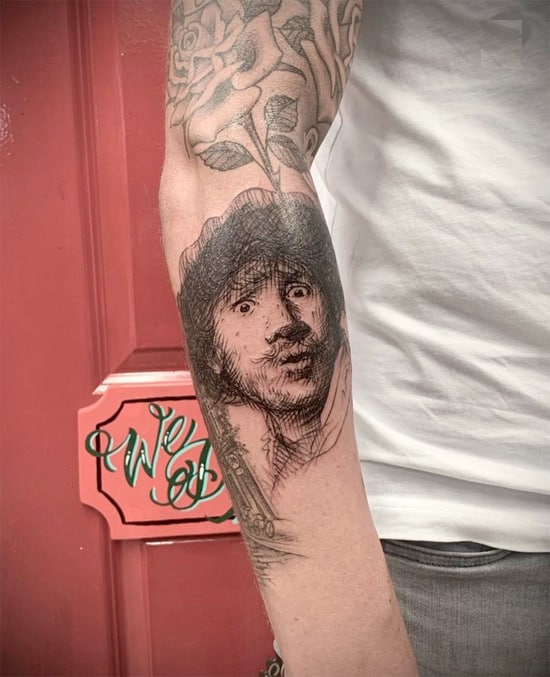
Picture: Rembrandthuis via Twitter
Body art is surely one of the world’s most popular forms of visual creativity, right up there with memes, movies, and digital design. Plenty of tattoos fall unmistakably into the category of high art, and some take a shortcut to get there – by going with miniatures of some of history’s greatest paintings. The Rembrandthuis museum recently shared the above photo of Rembrandt fan Timothy Englisch’s new tattoo, based on Rembrandt’s c.1630 self-portrait etching.
Art history ink spans in a variety of tastes (and tastelessness 🙂 and periods, as you might imagine.
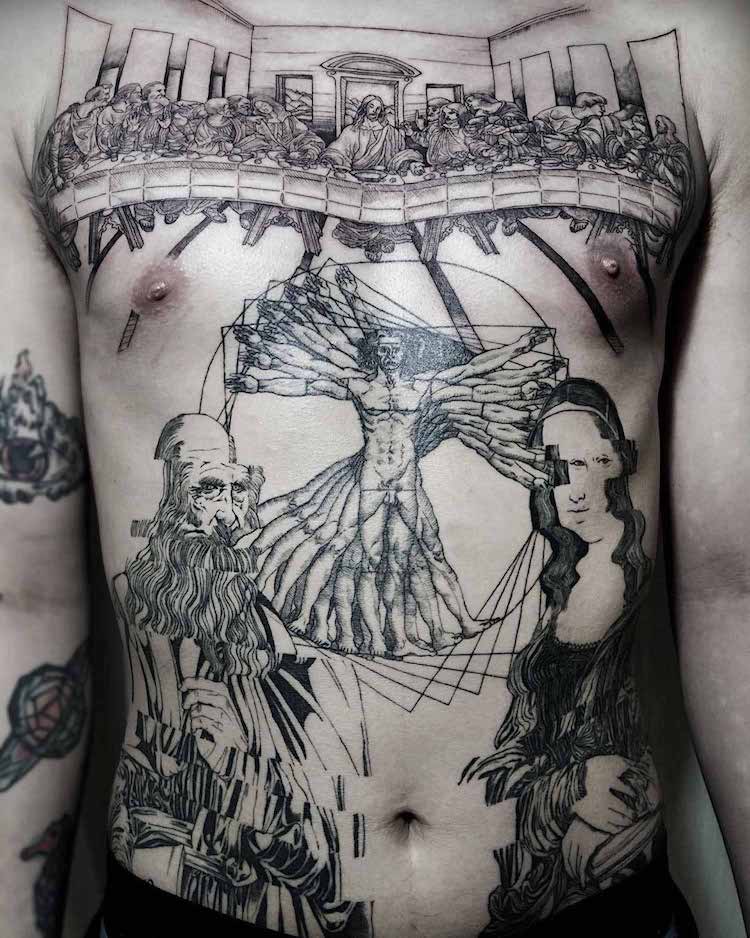
Da Vinci, Tattoo by Oozy
This incredible homage to Leonardo comes from a page on the Metropolitan Museum of Art’s blog spotlighting “29 museum-worthy tattoos inspired by art history.” The artists referenced there in tattoos include Jackson Pollock, Hokusai, and Gustave Klimt among others.
That’s also where this Van Gogh shoulder came from.
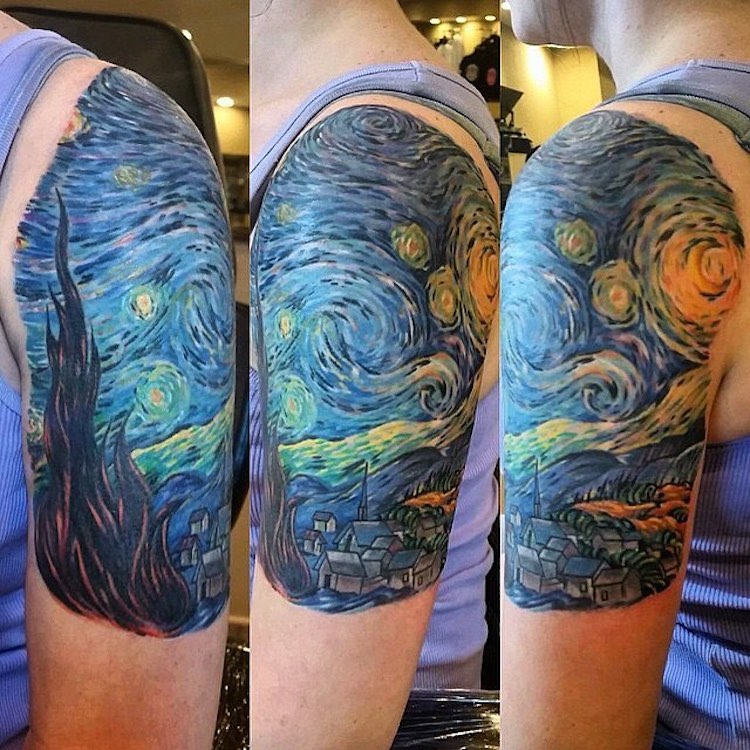
Starry Night by Van Gogh Tattoo by Bob Price
In the ink,
Chris

